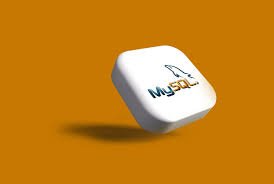Understanding MySQL: A Comprehensive Guide
MySQL is one of the most widely used relational database management systems (RDBMS) in the world. Developed by MySQL AB, it has become a cornerstone for web-based applications and enterprises alike due to its reliability, ease online database mysql, of use, and robustness. In this article, we will delve into the essential aspects of MySQL, exploring its history, key features, architecture, and common use cases.
History and Evolution of MySQL
MySQL was initially developed by a Swedish company, MySQL AB, in 1995. It was created to fill a gap in the market for a lightweight and flexible database solution that could handle large-scale applications. MySQL quickly gained popularity due to its open-source nature, allowing developers to modify and distribute the software freely.
In 2008, MySQL was acquired by Sun Microsystems, which was subsequently bought by Oracle Corporation in 2010. Despite concerns from the open-source community, Oracle has continued to support and develop MySQL, ensuring its place as a leading database solution in the market.
Key Features of MySQL
MySQL offers a plethora of features that make it a preferred choice for developers and organizations:
1. Open Source
MySQL is open-source software, which means it is free to use, modify, and distribute. This has significantly contributed to its widespread adoption and the development of a large, active community that continuously contributes to its improvement.
2. Scalability
MySQL is highly scalable, capable of handling small applications with minimal resource requirements as well as large-scale applications requiring high throughput and performance. This flexibility makes it suitable for a wide range of use cases, from personal blogs to complex e-commerce platforms.
3. High Performance
MySQL is optimized for speed and performance. It supports a variety of storage engines, including InnoDB and MyISAM, each designed for different types of workloads. InnoDB, for instance, is optimized for high reliability and performance in transaction processing, while MyISAM is designed for read-heavy applications.
4. Security
MySQL provides robust security features to ensure data protection. It supports SSL for encrypted connections, various authentication plugins, and fine-grained access control mechanisms to restrict user access at different levels.
5. Flexibility
MySQL supports multiple storage engines, each tailored to specific use cases. This allows developers to choose the most appropriate storage engine for their needs, optimizing performance and resource usage. Additionally, MySQL’s support for various programming languages and APIs enhances its versatility.
6. Replication and Clustering
MySQL supports replication, allowing data from one MySQL database server (the master) to be copied to one or more MySQL database servers (the slaves). This feature is essential for load balancing, data redundancy, and disaster recovery. Additionally, MySQL Cluster provides a high-availability, high-redundancy version of MySQL optimized for demanding applications.
Architecture of MySQL
MySQL follows a client-server architecture, consisting of a MySQL server and multiple client programs that communicate with the server to perform various operations. Here are the main components of MySQL architecture:
1. MySQL Server
The MySQL server is the core component that handles all database operations. It manages database files, processes queries, and performs transactions. The server is responsible for ensuring data consistency, integrity, and security.
2. Storage Engines
MySQL uses a pluggable storage engine architecture, allowing different storage engines to be used for different tables within a database. Common storage engines include InnoDB, MyISAM, and Memory, each optimized for specific types of workloads and performance characteristics.
3. Query Processor
The query processor is responsible for parsing, optimizing, and executing SQL queries. It determines the most efficient way to execute a query, considering factors such as available indexes and the current state of the database.
4. Client Programs
MySQL includes various client programs that interact with the MySQL server. These include command-line tools like mysql and mysqldump, as well as graphical user interfaces (GUIs) like MySQL Workbench, which provides a visual way to manage databases and execute queries.
Common Use Cases of MySQL
MySQL’s versatility and performance make it suitable for a wide range of applications:
1. Web Applications
MySQL is widely used in web applications, from content management systems (CMS) like WordPress and Joomla to e-commerce platforms like Magento and WooCommerce. Its scalability and performance make it an ideal choice for handling the dynamic nature of web data.
2. Data Warehousing
MySQL can be used for data warehousing applications, where large volumes of data are stored and analyzed. Its support for partitioning, indexing, and advanced querying capabilities makes it a robust solution for data analysis and reporting.
3. Enterprise Applications
Enterprises use MySQL for various internal applications, including customer relationship management (CRM) systems, enterprise resource planning (ERP) systems, and human resource management systems (HRMS). Its reliability and security features ensure that critical business data is protected and accessible.
Conclusion
MySQL continues to be a dominant force in the world of relational databases, offering a robust, flexible, and high-performance solution for a wide range of applications. Its open-source nature, combined with a rich set of features and a supportive community, ensures that MySQL will remain a valuable tool for developers and organizations for years to come. Whether you’re building a small web application or a large-scale enterprise system, MySQL provides the reliability and performance needed to succeed.







